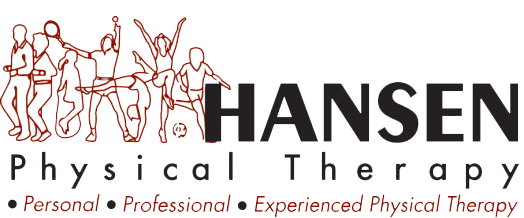A pulled muscle in your back is essentially a muscle strain injury. This can happen when you extend beyond your normal range of motion, make a sudden movement, or overstress your muscles without properly warming up. Pulled back muscles can also occur as a result of poor posture and muscle weakness or imbalance, so you don?t necessarily have to be doing strenuous activity to be at risk for this type of injury.
When you pull a muscle in your back, the injury can be quite painful and often restricts movement. Muscle strains can fully heal, though often the recovery time frame is age dependent, and the injury may require proper attention to fully recover. Initially, you can take steps to help relieve pain and swelling followed by regaining normal range of motion in preparation to build strength in muscles that support your spine.
Physical Therapy Techniques for Back Surgery
Although the vast majority of pulled back muscles do not require surgery, you can apply some of the same physical therapy and treatment techniques to help you recover from a muscle strain. After back surgery, healthcare professionals typically recommend:
- Pain control through medication and cold therapy
- Maintaining or avoiding certain body positions
- Promoting or avoiding certain movements
- Medical devices for delivering Transcutaneous Electrical Nerve Stimulation (TENS), cryotherapy, and contrast therapy
- Exercises to strengthen and stretch the affected muscles
It?s always a good idea to seek medical attention if you?re not sure what type of injury you have. Working with a physical therapist and closely following their instructions may help you recover more quickly and avoid future back injuries.
Stretches and Exercises for a Pulled Back Muscle
Physical therapists focus on the muscles that have been affected by the injury, those that have been weakened, and the small muscles that help stabilize and protect the spine. Even healthy athletes can have muscle imbalances, so everybody may benefit from these physical therapy exercises for a pulled back muscle.
Maintaining a Neutral Spine
It may seem easy, but the simple act of maintaining a neutral spine with proper alignment can help relieve pressure on joints and connective tissues and build strength in the muscles that support the spine. The best way to learn this exercise is by working with a physical therapist to find your neutral spine position?while sitting, standing, lying down, and moving?and then practicing it often. The soft tissues of the body are not well designed to maintain one position for a prolonged period of time, therefore changing positions frequently during the day is recommended. Eventually it will become a habit, and your risk of back injury due to poor posture may decrease.
Hamstring Stretch
The hamstrings play a major role in back pain and injury, especially in the lower back. For this exercise, lie face-up on the floor with a neutral spine and both legs straight. Extend one leg toward the ceiling while supporting it with your hands, ?and hold the stretch. Go only as far as you can while maintaining a neutral spine.
Pelvic Tilt
Strengthening the abdominal muscles can help stabilize the spine. You can isolate these muscles with the pelvic tilt exercise. Lay face-up on the floor with both knees bent. Using only your abdominal muscles, lift the pelvis toward the ceiling, pause, and slowly lower back to the floor. Relax the gluteal muscles to help isolate the abdominals in this exercise. Feeling the pelvis rock forward and back is an important part of maintaining normal movement of your spine.
Low-Impact Aerobic Exercise
While it?s a good idea to fully rest for the first few days after pulling a back muscle, it?s important to stay active for the duration of your recovery. Doing low-impact aerobic exercises may help keep the spine mobile and functional without painful jarring. Some of the exercises to consider include walking, elliptical training, stationary bicycling, and swimming.
These are just a few of the many physical therapy exercises you can do to support recovery of a pulled back muscle. As you get better at maintaining a neutral spine during movement, you may introduce more dynamic exercises to help you strengthen and stretch the muscles in your hips, abdomen, and back. A healthcare professional can establish the progression of these exercises on a case by case basis.
Cryotherapy and Thermotherapy for Back Injuries
In addition to physical therapy exercises, you may also try cryotherapy and thermotherapy to aid in the recovery of a pulled back muscle.
Cryotherapy
The application of therapeutic cold helps naturally relieve pain and reduce swelling. This is important immediately after an injury occurs because that is when the body?s inflammatory response is strongest. Apply cold with ice packs, gel packs, ice baths, or a cryotherapy system.
Thermotherapy
The application of heat can also help to relieve pain following a muscle strain, however, the timing of applying heat may vary depending on the severity of the injury. The use of heat may be beneficial in increasing blood flow to the area, decreasing muscle tightness, and helping to regain normal range of motion.
